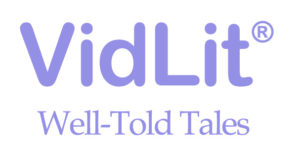Phone Numbers in Dialogue

Last week I had lunch with a friend who has a new book coming out. She’s at the stage where her publisher is copy editing her final manuscript, and she told me about a problem she’s been having that I think holds some valuable lessons. We’ll call my friend Helen.
Helen disagrees with her publisher about how some of the numbers should be handled in the manuscript. It’s actually more complicated than that because when she raised the issue with her editor, he actually agreed with her, but then stuck to the style that neither of them liked!
Here’s the story.
Helen has some dialogue in her novel where the characters talk about calling 9-1-1. For my foreign listeners, that is the emergency number in the United States. Her publisher uses The Chicago Manual of Style, as many book publishers do—that’s totally normal—and the general rule in Chicago is that you usually write out numbers in dialogue even when you might use the numerals in narrative text.
You Often Write Out Numbers in Dialogue
For example, in the Chicago Manual of Style, you write out the words for the numbers one through 100, but use the numeral format for most bigger numbers. (I used the numeral “100” here because our website follows AP style for numbers, which is different.) So you’d use the numerals if you wrote something like “Aardvark only needs 2,400 more miles for a free plane ticket.” But you’d write out the words for 2,400 in dialogue if you wrote something like this:
Squiggly said, “Aardvark can be kind of obsessive. He once counted all his change by laying out two thousand four hundred pennies in rows on the table.”
Following this style, Helen’s copy editor changed her manuscript so the phone number 9-1-1 was spelled out. “He should call nine one one,” with the words “nine one one.” Helen thought this looked ridiculous, and her editor agreed, but then said there was nothing he could do about it because the publisher follows Chicago style.
When Helen and I talked about it at lunch, I thought the whole situation was ridiculous!
You Can Make Exceptions
The first lesson I want you to learn is that you never have to slavishly follow a style guide when your common sense tells you what you’re writing should be different. Often there are situations that aren’t specifically covered by a style guide, and you should make your own judgement about what is best, maybe guided by similar rules that are covered by the style guide, but you should never feel like you have to force your work into something awkward just so it “fits the rules.” Trust me, the editors at the style guides would want you to use…

